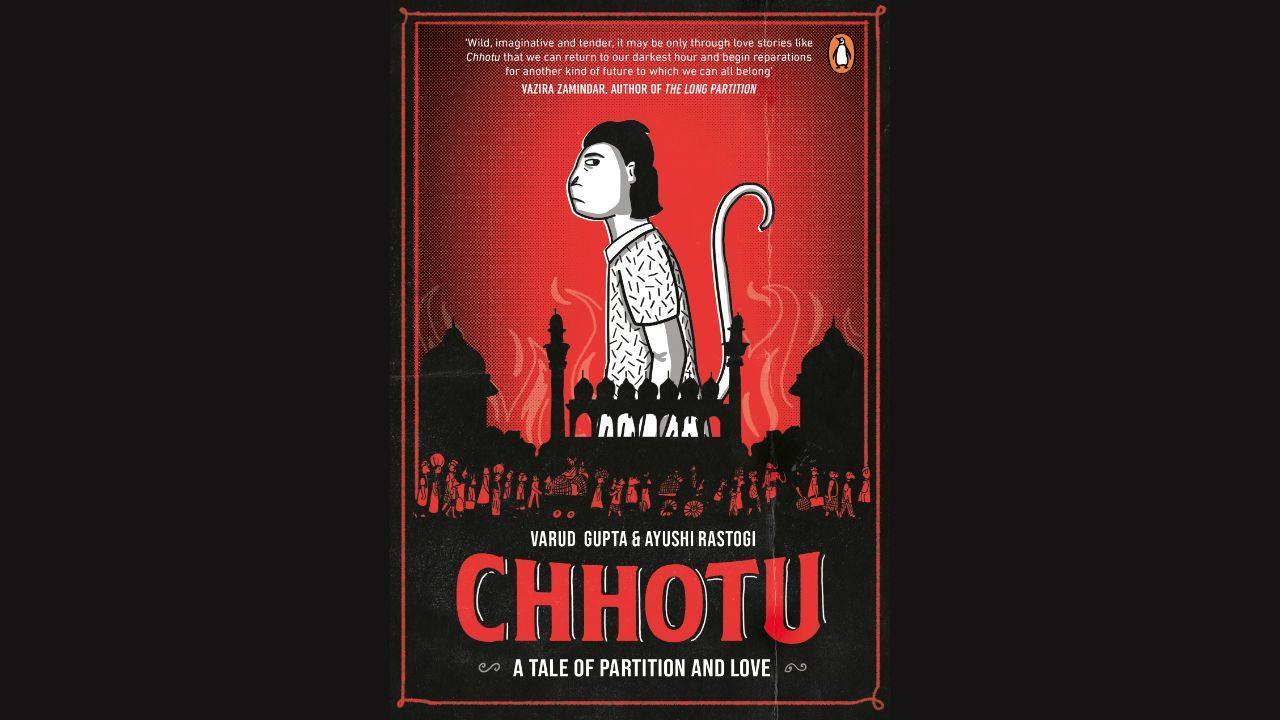While we await the release of a graphic novel capturing Freddie Mercury’s life, take the opportunity to pick up some must-read titles by Indian authors who have been championing the illustrated literary style

Chhotu: A Tale of Partition and Love by Varud Gupta and Ayushi Rastogi. Pic Courtesy: Penguin Random House
A few days ago, it was reported that iconic musician Freddie Mercury’s life story will be turned into a graphic novel. The graphic novel will feature the Queen frontman's own words and will trace his journey starting from his childhood in Zanzibar to his rise as one of the most recognised rockstars in the world. Z2 Comics said it will collaborate with Universal Music Group and Mercury Songs to publish ‘Freddie Mercury: Lover of Life, Singer of Songs’, which it described as “the first-ever graphic novel paying tribute to one of the greatest figures the music world has ever known”.
The rise of powerful illustration and engaging storytelling goes on to show the potential of graphic novels as works of literature. This form has been developing in India too. Although not yet as popular as conventional books, such works enjoy a dedicated, niche following among bibliophiles. The visuals in these works allow authors to make striking allegorical references to the political and social concerns of the day too.
Here are a few Indian graphic novels worth adding to your reading list.
Chhotu: A Tale of Partition and Love by Varud Gupta and Ayushi Rastogi (2019)
Set in 1947, when the British are leaving the country and the event of Partition is looming over, the book’s protagonist Chhotu’s mind is occupied by his crush. A student and paranthe-cook in Chandni Chowk, Chhotu just wants to ask Heer, the new girl at school, to go out with him. However, just when Chhotu plans to make his move, the potatoes in the town go missing. Chhotu reluctantly gets pulled into the worlds of corruption and crime. Caught in that whirlwind, he also struggles to understand the meaning of life and freedom. Illustrations are used to convey the diversity of the people who inhabited Chandni Chowk at the time.
Kari by Amruta Patil (2008)
This book attempts to depict the realities of homosexual women in a highly heterosexual society. The protagonist, Kari, and her lover attempt suicide. But they survive and are forced to go their separate ways. Through Kari, the novel shows the impact of deep-rooted social conditioning on gender identities and gender roles that we are supposed to follow. It is a story about finding individuality in a society which is rife with discrimination and prejudices.
Delhi Calm by Vishwajyoti Ghosh (2010)
The graphic novel is a re-imagining of Delhi during the Emergency era. Set in the background of a situation where people are constantly under surveillance. 'Work More, Talk Less' gets yelled on microphones as you walk down the streets. The book focuses on three young men who have very different perspectives in life, but the common thread between them is the thought of a change. Is there a change in the horizon? What role do these individuals play for that change? Ghosh’s illustrations are majorly in sepia with dark undertones. It captures the gloomy situation of that particular time period.
Corridor: A Graphic Novel by Sarnath Banerjee (2004)
It is set in contemporary Delhi and revolves around Jehangir Rangoonwalla, a tea seller and a second-hand bookshop owner. His colourful customers include Brighu, who has a passion for obscure collectibles and a love life; Digital Dutta who lives mostly in his head, torn between Karl Marx and an H-1B visa; and the newly married Shintu, looking for the ultimate aphrodisiac. The story unfolds in the corridors of Connaught Place and Kolkata. It tries to capture the alienation and fragmented reality of urban life through an experimental use of text and image. Banerjee blends the storytelling with other art forms such as sketches, illustrations, and photographs to make it an engaging read.
Munnu: A Boy from Kashmir by Malik Sajad (2015)
The story focuses on Munnu, a young boy from Kashmir, who loves to draw. He is growing up in an environment which is marred with conflict. But his life revolves around his family, who are often taken to identification parades. This novel is a close insight into daily life in Kashmir. It is loosely based on the author’s real life experiences. In its core, this book is a heartwarming story of a boy’s childhood and his coming-of-age. The Srinagar-based author allegorically represents Kashmiris as the human form of the Hangul deer -- an endangered species.
Legends Of Halahala by Appupen (2013)
In this graphic fiction, Bengaluru-based novelist and artist Appupen uses distinct drawing styles to portray five different stories. These tales are set in different periods, each portraying a perspective on love and obsession. The book does not use any words, instead it relies on the art and the illustrations to convey the narrative. Appupen’s unique style blends with stories ranging from the Oberian Age to a dystopian future, and makes this graphic novel even more interesting.
 Subscribe today by clicking the link and stay updated with the latest news!" Click here!
Subscribe today by clicking the link and stay updated with the latest news!" Click here!









